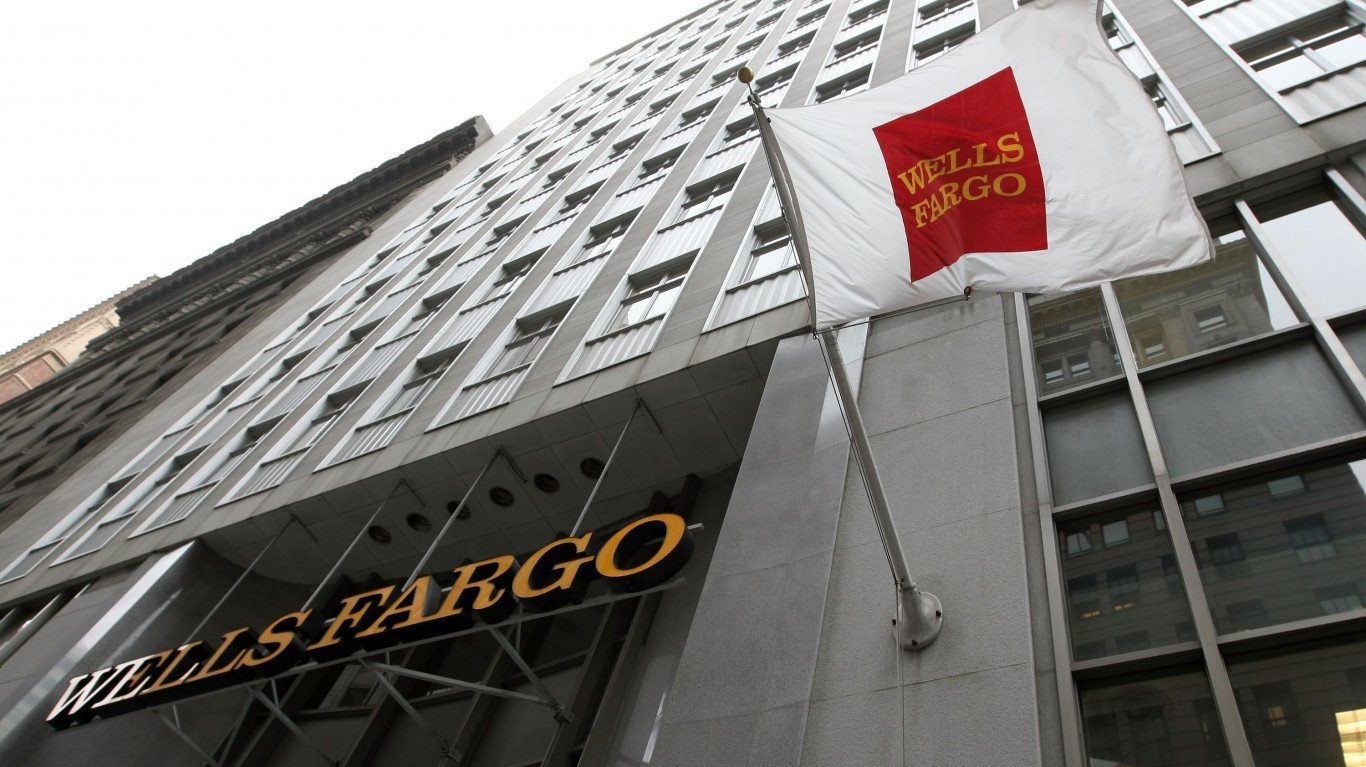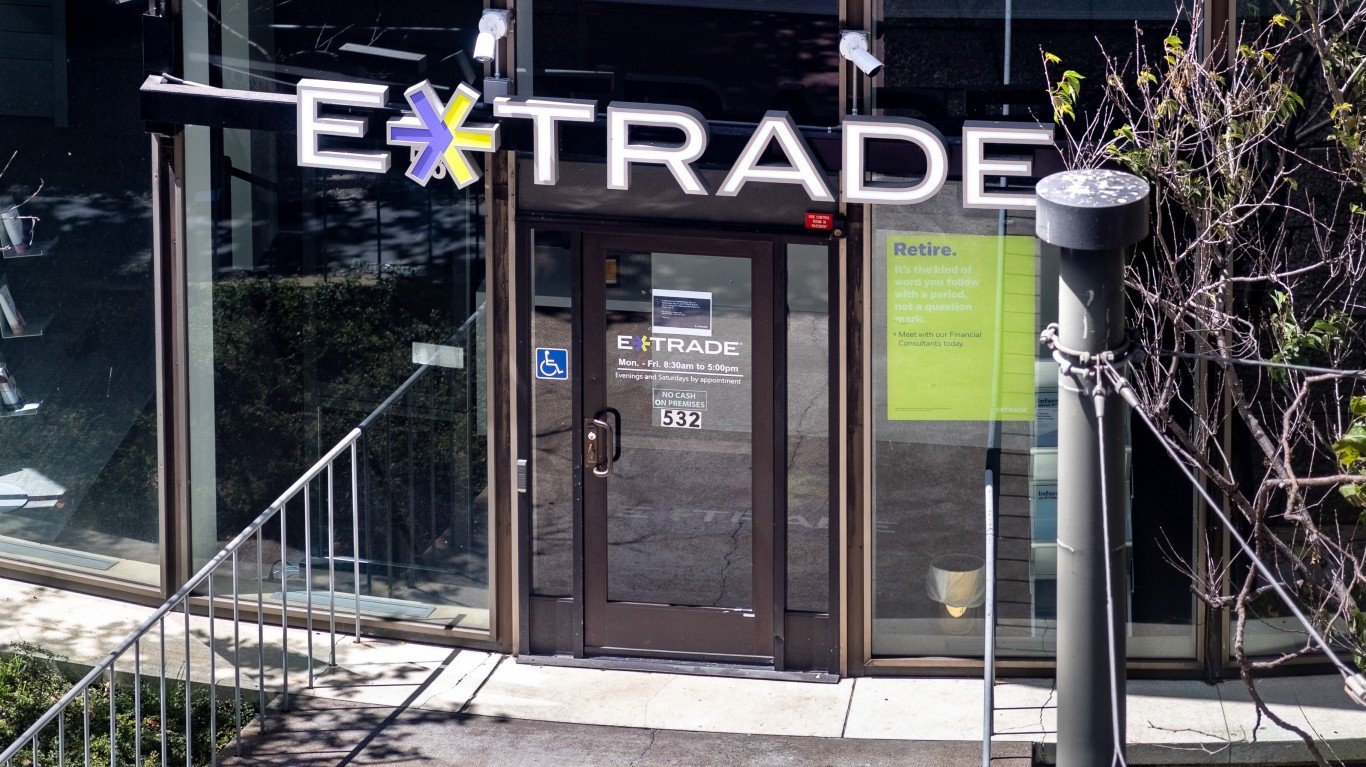

Wells Fargo & Co. (NYSE: WFC) was not viewed as an earnings season winner after it released its first-quarter results for 2019 on Friday. In fact, its shares fell by about 2.6% to $46.49 on the day of the report. Our own take was that the earnings report might be the least of the big bank’s problems at this time, in part because it doesn’t even have a real chief executive officer running the bank now that Tim Sloan is out.
The future permanent CEO’s first job will be to get Wells Fargo back into compliance with regulators’ demands so it can get out from under the Federal Reserve’s cap on its ability to grow assets for the time being. Interim CEO Allen Parker’s comments in Friday’s release are simply a placeholder until the bank appoints a permanent leader to attack the issues limiting growth.
What was interesting about the Wells Fargo drop on Friday was that the stock was originally up by about 2% in early indications. It was as if the trading community could smell a wave of analyst downgrades coming.
It turns out that Monday’s brigade of analyst calls had several downgrades, and even more price target cuts, on Wells Fargo.
The stock was downgraded to Neutral from Buy at Merrill Lynch. Buckingham Research downgraded it to Neutral from Buy, along with a new $53 price target, down from a prior $65 target price. And the biggest call came from Goldman Sachs, which removed Wells Fargo from its Conviction Buy list and downgraded it to Neutral with a $48 price target.
And, as mentioned, multiple price targets have been lowered as well:
- BMO Capital Markets maintained a Market Perform rating but cut its price target to $63 from $65.
- Deutsche Bank maintained a Hold rating and lowered its target price to $48 from $54.
- Morgan Stanley maintained its Equal Weight rating but lowered its target from $55 to $51.
- Barclays maintained its Overweight rating and lowered its price target from $64 to $60.
Where things get interesting is that Wells Fargo opened down at $45.87 a share, for another 1.4% drop on Monday, but by noon the shares were back up in positive territory for the day.
UPDATED FOR CLOSING PRICE: After having seen a gain of five cents to $46.54 earlier in the day — Wells Fargo shares closed up 0.6% ($0.28) at $46.77 on more than 33 million shares. That is against a 52-week range of $43.02 to $59.53. Its consensus target price from Refinitiv was $56.44, but that was prior to the latest drops.
It is not incredibly unusual for stocks to gyrate after earnings, but here the first reaction and now the second reaction may have both missed the mark. And some of Wells Fargo’s more bullish investors likely will take some comfort in the notion that there were multiple analyst downgrades and price target cuts and the shares managed to recover.
Chief Financial Officer John Shrewsberry talked up Wells Fargo’s results last week with the report:
Our financial results included continued strong credit performance and high levels of liquidity. In addition, our continued de-risking of the balance sheet and consistent level of profitability have resulted in capital levels well above our regulatory minimum. As a result, we returned $6.0 billion to shareholders through common stock dividends and net share repurchases in the first quarter, up 49% from a year ago. Returning excess capital to shareholders remains a priority. While our expenses in the first quarter included typically higher personnel expense, we remain committed to, and are on track to achieving, our 2019 expense target.
Wall Street traders and investors do not always align with analyst research notes. This is one of those instances when some might wonder if the analyst community was really offering a floor despite lower expectations rather than projecting much more downside.
Take This Retirement Quiz To Get Matched With A Financial Advisor (Sponsored)
Take the quiz below to get matched with a financial advisor today.
Each advisor has been vetted by SmartAsset and is held to a fiduciary standard to act in your best interests.
Here’s how it works:
1. Answer SmartAsset advisor match quiz
2. Review your pre-screened matches at your leisure. Check out the advisors’ profiles.
3. Speak with advisors at no cost to you. Have an introductory call on the phone or introduction in person and choose whom to work with in the future
Take the retirement quiz right here.
Thank you for reading! Have some feedback for us?
Contact the 24/7 Wall St. editorial team.



